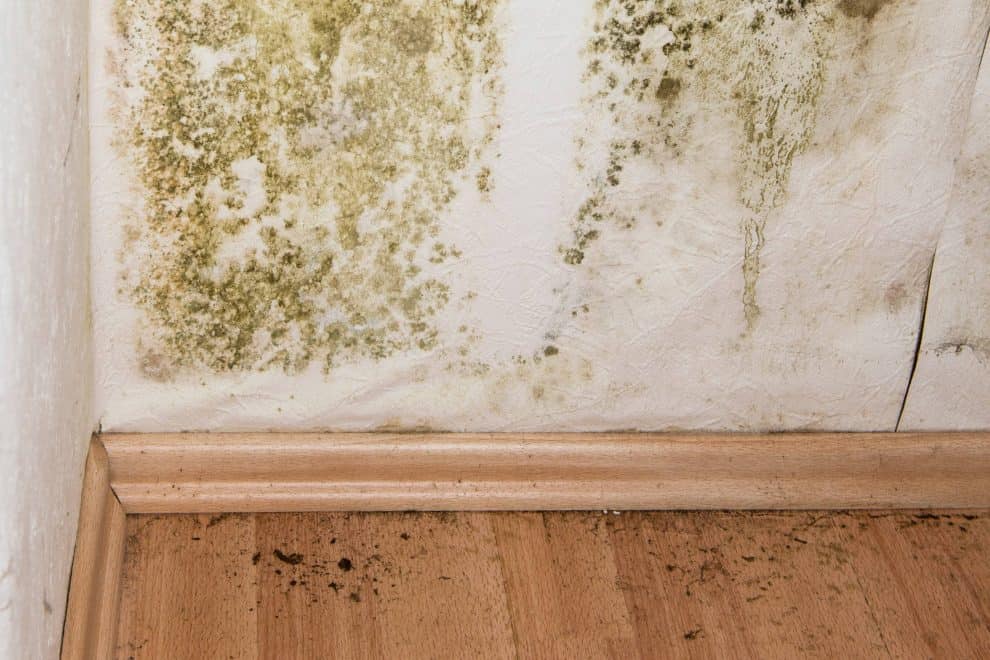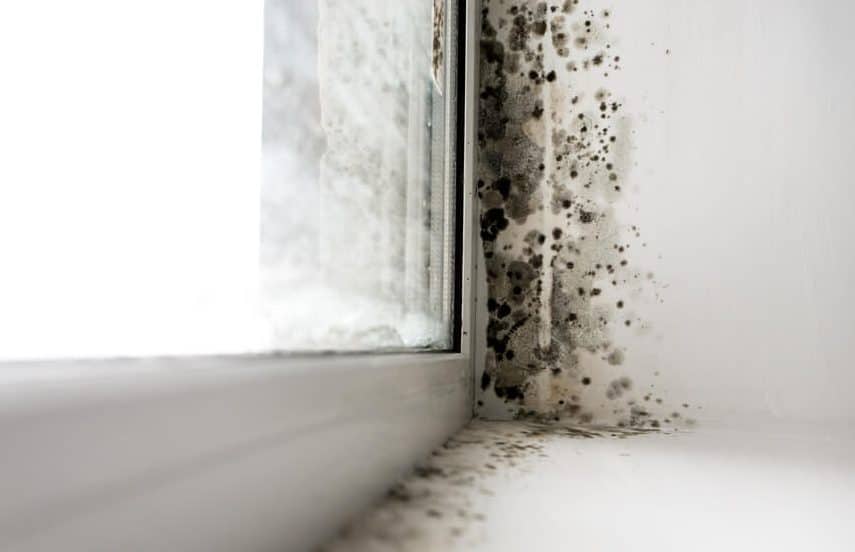Dampness in a house is an issue that can impact both old and new properties alike.
Left untreated, dampness can lead to the growth of mildew and mould.
This can be detrimental for those living there, especially those suffering from breathing issues.
It is a frequent source of irritants and allergens which could contribute to symptoms like sneezing, itchy skin or asthma attacks.
To actually cure damp, the SOURCE of the problem must be found, and fixed.
If your house is suffering from damp, it’s essential to identify the source and take action promptly in order to prevent further harm. Fortunately, damp can easily be prevented if you know its signs and symptoms.
Rising damp occurs when moisture seeps up through porous building materials such as brick, stone or mortar, leading to peeling paint and plaster on walls above the water line.
Fortunately, effective damp proofing products exist that can help you eliminate damp without creating further issues in the future.
The ideal damp proofing materials are not DIY use and must be taken care of by a professional, someone who knows what they are doing.
The negative effects of having a damp house.

Let’s face it, we cannot think of any positive effects of living in a damp house. If you, dear reader, know of one, please do let me know.
Damp is an all-too-common issue, from mildew on your walls to peeling paint.
The key to eliminating damp is understanding the source of excess moisture and finding a way to eliminate it.
Damp problems may start out small, but if left unchecked, can become major problems.
If you are wanting to sell your house, damp must be cured before it goes on the market, or you may struggle to sell it, plus interested parties may find it hard to get a mortgage on a damp affected house, so take it seriously and do something about it.
To detect damp early on and avoid becoming a major issue, here are a few tips:
A reliable builder or surveyor can provide advice and direction on the most effective ways to deal with damp issues. However, for homeowners on a budget, here are some simple solutions you can try:
Damp walls and the accompanying damp patches can be a real hassle to eliminate, but it doesn’t have to be.
With the right treatment plan in place, you can finally put an end to these problems once and for all.
Poor pointing or a hole in the bricks can cause rainwater to seep into, seeping into joints between sills and walls, leading to damp patches, loose plaster or rot in skirting boards.
It could also be indicative of a more serious issue, such as rising damp, the failure of your damp proof course.
Water seeps upward through porous building materials (like brick, stone or sandstone) much in the same way oil does through a wick in a lamp.
To prevent or manage rising damp issues around your house, one approach is to improve drainage around your property. Doing this requires precision; otherwise, damp-proof courses may be injected in the wrong places and not work at all if thick stone walls are present.
Unless you actually fix the cause of the damp it will not go away.
There is no cheap or quick fix to curing damp.
Would paint cure damp in my house?
There are various methods to get rid of damp in your house.
Heat, ventilation and exterior wall treatments are three popular solutions but paint is not one of them.
Damp walls can be a serious issue if left untreated, as they can damage the plaster or wallpaper below and lead to brown patches, loose plaster and rotting in the skirting boards.
Painting an exterior wall with normal masonry paint will not cure damp as most top brand paints are simply coloured water.
To effectively address damp in your home, it’s important to identify what’s causing it and then address the issue accordingly.
Milder cases of damp may only need some interior painting or cleaning; however, more severe cases could potentially damage your house’s structural integrity.
The best way to cure damp exterior walls is by having a specialist wall coating fitted to your home.
Not only will it improve the appearance of your house, and stop damp, it is guaranteed for 20 years not to fade, crack, chip or peel.
An exterior wall coating is guaranteed to cure damp and to stop it coming back.
We offer coloured wall coatings and transparent ones, and also wall coatings that can reduce your home heating costs by up to 30%, get in touch for more details.

This website has literally hundreds of examples of exterior wall coating work so please take time and stick around to learn more.
How to fix the internal damage damp does, after the problem has been cured.
The only way to cure damp, as advised above, is to cure the SOURCE of the problem, usually found to the exterior of your property.
Damp cannot be cured internally, interior damp proof paint does NOT work and you would be wasting your time, and your money, so don’t.
Damp is water, which if it appears as a patch on your wall, applying an internal damp proof paint on the affected area will see the water, the cause of the damp, emerge somewhere else.
Water flows, and will find a way to re-enter your home, which is especially true if you have not tackled the source of the problem.
Once the cause of the damp has been sorted, there may be damage internally so let’s look at what to do.
Water stains on the wall.
If your home had a damp problem which has now been fixed you may see a stain on the wall where the water got in.
The damp may have stained paintwork and wallpaper. Dulux say to deal with this
Mix one cup of white vinegar into a bucket of warm water, and use a soft sponge to tackle stubborn stains.
However you can buy a stain blocker from your local DIY store, which is an easy and effective way to sea, in the stain and prevent it from reappearing when you redecorate the affected area of wall.
Whatever method you use, you must allow the wall to dry out before repainting.
Remember, if you have not yet solved the problem of where the damp is coming from, don’t run a fools errand with any interior work, always, without fail, start from the outside and work inwards, not the other way around.
A stain blocker is not a damp proofing solution and will NOT cure damp.
Mould still on the wall.
Again, the SOURCE of the damp must be cured before you attempt to remove mould.
If mould still exists inside your house, it must be treated with a special damp and mildew remover, sprayed on, and wiped off with kitchen roll.
You must use gloves and also wear a mask to avoid inhaling any mould spores, which are very bad for your health.
DO NOT USE SPRAY BLEACH, this is a common misconception, spray bleach will NOT cure the mould, it will make it WORSE because spray bleach actually contains WATER, so in effect you are compounding the problem and making it worse.
The mould spores will still be there, but you have just bleached them to a white colour.
SPRAY BLEACH WILL NOT CURE DAMP OR MOULD, DO NOT USE IT.

Be very careful when using spray bleach elsewhere in the home as it contains potentially harmful chemicals such as METHYLCHLOROISOTHIAZOLINONE, and METHYLISOTHIAZOLINONE, (try pronouncing that after a few glasses of wine) … which can sometimes cause an allergic reaction.
Blistering paint
Dampness inside the home can leave paint damage behind.
If the walls have damage, scrape the affected paint off, smooth out the rough edges with sandpaper, and then repaint.
If damp has affected glossed surfaces such as doors or skirting boards, the same thing applied, scrape the old paint off and replace with new paint.
This is a simple DIY job and should not take long however if the affected areas are damp or wet to the touch, leave it a month to dry out before repainting.
Blown plaster.
The damp may have effected the plaster on your internal wall, leaving it sandy and flaking off.
In extreme causes, the plaster may have actually fallen off the wall and onto the floor.
Plastering a wall is not as easy as it sounds and you may have to contact a qualified plasterer to fix the issue.
Dry rot or wet rot.
This is where damp has been so bad it has affected timber or wood areas of the house. This is something that must be taken seriously, especially if the affected wood is structural.
Dry rot is something that you need to contact a specialist timber damage company to have fixed.
Dry and wet rot undermines the structural strength of wood and as above, should only be sorted once the source of the damp has been eliminated.
So as you can see, damp can leave behind all manner of problems, even after having damp proofing work done to your home.
But as long as you have had the source of dampness cured, and take the steps outlined above, you should now enjoy living in a damp free home and may even see an improvement in your health as a result.
If your house suffers from damp, please do get in touch as we may be able to help you.
Call us FREE on (0800) 970 4928 or email the team today.

